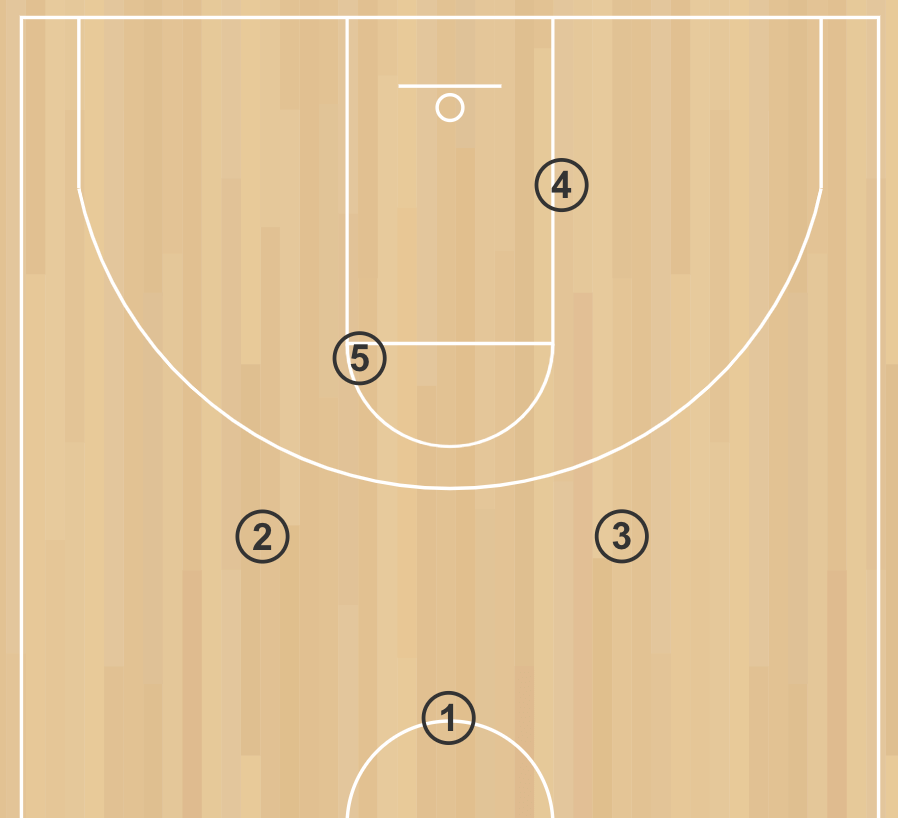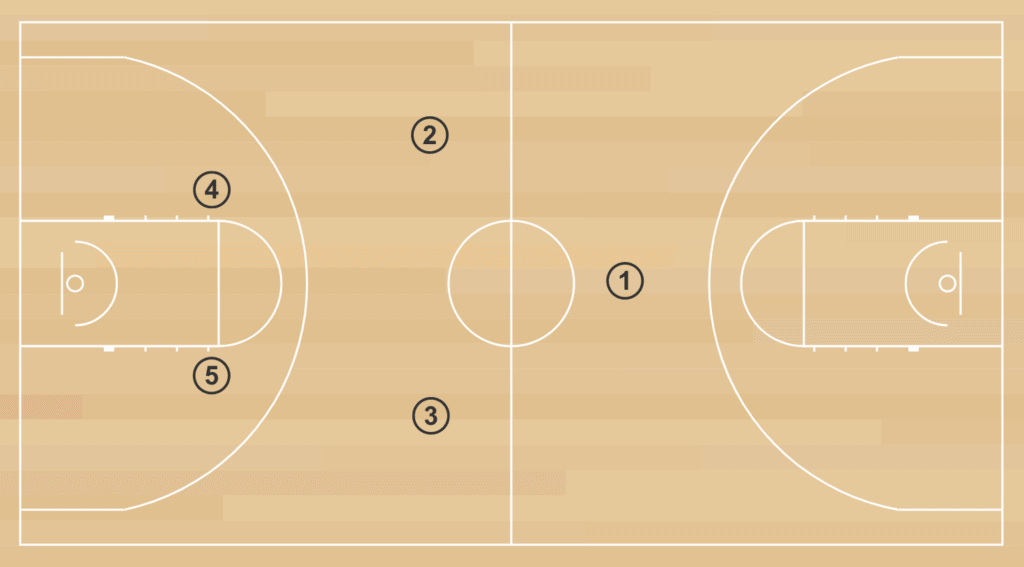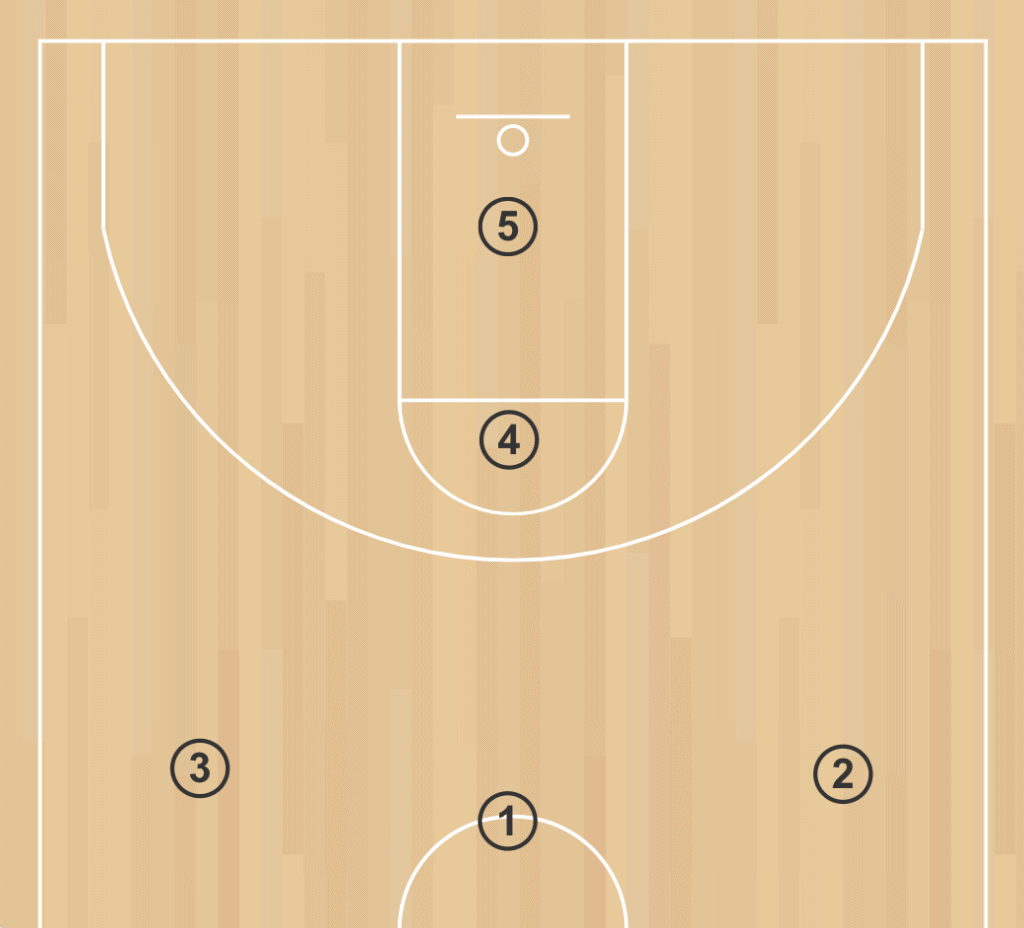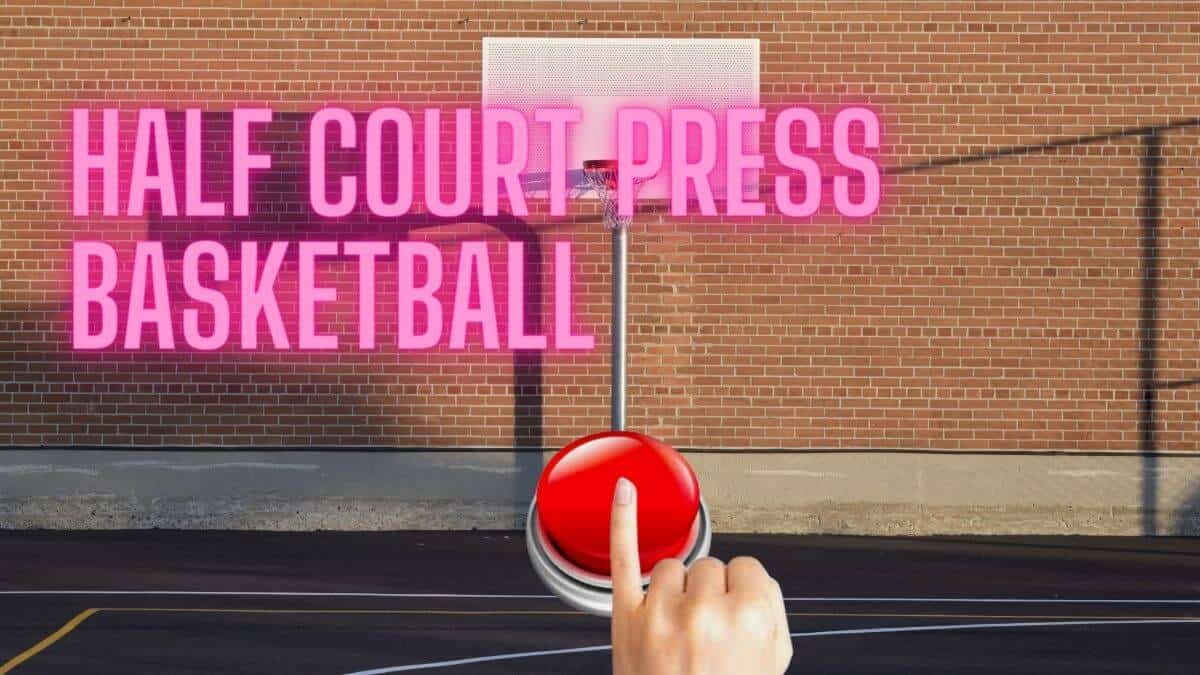The half court press in basketball is a defensive technique designed to aggressively pester the offense. Closely related to the full court press, the half court press evolves naturally from a full court strategy as the offense advances. The half court press has the added feature of a natural barrier at the half court line.
Basketball strategy is essential to success on the court. Press defenses are some of the most popular defensive strategies in the game. The half court press uses quick, aggressive, and well-timed movements to force opponents into turnovers and low-percentage shots. This can be particularly effective against teams that rely heavily on their set offense, as the half court press can disrupt and even completely shut down a team’s offensive system.
In this post, we will explore the half court press in detail, discussing its origins, its variations, and how to use it effectively. We will also discuss the advantages and disadvantages of utilizing this defensive strategy.
Whether you’re a coach looking for a new way to challenge your team or a basketball enthusiast looking for a better understanding of the game, this post will provide you with the knowledge and insight you need to better understand the half court press.
Implementing a Half Court Press
Presses are often deployed by a trailing team in the waning minutes of a game. It takes a lot of movement and energy to sustain pressure across the floor, so this strategy can be more effective in short bursts.
When used independently of the full court system, a half court press can loosen the load. Rather than pressuring from goal to goal, you’re giving the offense a little space and letting them take up more of that 10 seconds they have to move to the front court.
But the half court version shares a lot of qualities with its full court cousin. It often forces turnovers, but it also drains your defenders and has the potential to give up fast breaks when it fails.
As with most basketball strategies, we’ve seen coaches embrace a half court pressing defense as a cornerstone of their defensive playbook. And when this strategy is developed and refined it can be devastating. But there are certain strengths and weaknesses you will want to be aware of.
Strengths of the half court press
- Creates trapping opportunities in the half court.
- A well practiced press will defend against a good passing game.
- The constant pestering can be jarring and frustrating for an opponent.
Weaknesses of the half court press
- Pressing strategies can consume team’s energy quickly.
- A half court press can be more difficult to learn and teach than a basic zone.
- Elite passing and ball handling can make this strategy a liability.
So you’ll want a fairly advanced and athletic team to pull off a strong half court press. There’s a lot of movement involved in this strategy and if your team can’t keep up on the rotations effectively, it can leave some large gaps in your defense.
Types of Half Court Press
2-2-1 Half Court Press

This is a fairly classic pressing style. One defender on the basket, while the remaining four defenders are out there, grinding away at the offense. This can be a great choice if you’re starting to see your opponent hit their stride and you wanna shake that up.
The 2-2-1 is often extended into the full court. This one can be straightforward to teach, as presses go, but it’s still an advanced technique. The 2-2-1 was notably favored by Gregg Marshall of Wichita State.
3-2 Half Court Press

This one is one of my favorites just because it’s so unique. It’s more of a 1-2-2 lineup, but the trapping triangle in the front and the posts tend to function independently and the point moves around a lot, so I can understand the 3-2 assignment.
The 3-2 half court press is fun if you’re looking for a surprise defense out of a 3-2 or a 2-3 zone. It can look like you’re falling back into your standard formation and then suddenly you’re offering a very different defensive look.
What’s more, this can be a solid trapping defense, If you’ve got your opponent thinking they’ve sorted your zone, suddenly you’re creating trapping turnovers. While the 3-2 press can leave your baseline a little barren, you can always collapse into a standard zone as the offense advances.
1-2-2 Half Court Viking Press
The viking press is one of the more popular press strategies. Technically, it extends into the front court, so I guess you could argue it’s not a true 1/2 court press, but most of the action here occurs in the half court.
One of the advantages of this press is that it leaves some help around the basket while other press defenses tend to move all of their defenders up to the front lines.
This press was favored by Coach Jay Wright of Villanova. Just watch some Villanova possessions from the Jay Wright era and you can see how effective this system can be. It’s a unique system to watch as well with those springy front defenders hunting around for traps.

3-1-1 Half Court Press

I like the 3-1-1, even if it is rather aggressive and fairly uncommon. As is the tradition with this style of defense and many others, the point guides the ball handler to either side for a trap.
This defense tends to lose some effectiveness at higher levels of play, and you really won’t see this much beyond High School.
These extreme defenses can be fun to play with, but in general they’re just so distinct that they end up being quite easy to identify, which then makes a counter quick and available. And an extreme defense will often have a very effective counter.
4-1 Half Court Press

How about this one for an outlandish play? We line everyone but the center up along the half court line. When the offense approaches, the guards jump over the line and push the ball handler to either side for a trap.
Supposedly it works. I haven’t really seen it in action, and it sure leaves a lot of open court space, but if you can’t break into it and you get stuck in a trap, it will probably punish you. Still, I’m convinced a basic press break will get you through this just fine. Let me know if you’ve had some direct experience.
Countering a Half Court Press
Patience is crucial in defeating a press. The entire point of this style of defense is to overwhelm an offense and force them to make rushed and ill-advised decisions. It shouldn’t be tough to spot a press, it’s right there in your face. When you spot it, maintain composure and confront it methodically.
One strategy to counter a half court press is to use quick, short passes. By making a series of short, accurate passes, the offense can shift the defense to its breaking point and create an opening to move the ball up the court. This is especially effective when the defense is playing a tight press.
Creating penetration can trigger a team executing a press to collapse their defense into a shorter formation. Use ball handling and passing to break into the press. This isn’t always available, depending on how advanced your team is, but it is an effective way to get the ball into the front court and create open shots.
Watch out for those traps. Make sure your team is well aware of the process and what this defense is trying to do. They want to break your stride and they want to push you into those zones where they can drop down an extra guard, scare you into picking up that ball and then block you into a turnover.
History of the Half Court Press in Basketball
The half court press is closely related to the full court press. You can use this style of play on its own or in conjunction with a traditional half court zone, but they’ll typically arise in conjunction with their full court cousins.
The full court press is sometimes incorrectly accredited to Coach Gene Johnson of Wichita State. Wikipedia suggests that credit for the full court press go to John McLendon. McLendon was credited as the first African American head coach to coach at a predominantly white university when he took the helm at Cleveland State in 1966.
Press defenses continue to be popular. One of the most notable practitioners of the press defense is Shaka Smart, former coach at VCU, current coach at Marquette. During his time with VCU, he popularized a style of press defense which came to be known as his “havoc” defense.
Conclusion
The half court press is a valuable strategy to bring into your playbook. It can be used to slow down the offense, force turnovers, and create great scoring opportunities for the defense. While it is not the most popular defensive strategy, it can be extremely effective when used correctly. With proper execution and communication, the half court press can be a great tool for coaches and players to add to their defensive arsenal.
